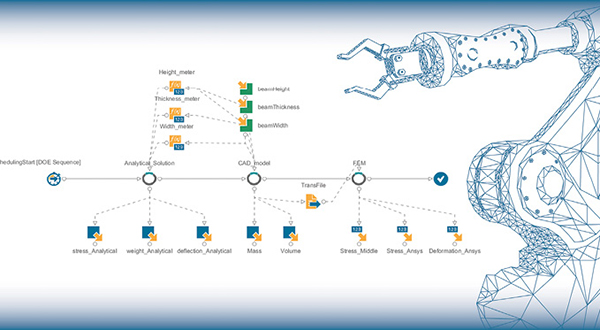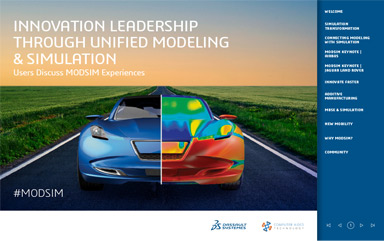
Image courtesy of ESTECO.
Latest News
December 1, 2018
Optimization driven design allows an efficient exploration of the design space to improve existing solutions, as well as identify options that would have not emerged with a traditional approach. The quest for the perfect design requires large numbers of analyses of objectives and constraints escalating the level of precision of models.
However, including higher-fidelity analyses in the design process increases complexity and computational expense, and can be quite time and resources intensive.
The use of analytical models can minimize the expenses of high-fidelity ones at reduced computational cost and ultimately speed up the solution of an optimization problem. Two models of the same physical system with different fidelity can be created: one accurate and expensive and one less costly but less precise.
Multi-fidelity optimization provides a mean to leverage both low- and high-fidelity data in order to minimize the cost of the parametrization while maximizing the accuracy of estimates.
With VOLTA, the ESTECO web platform for multidisciplinary business process optimization and simulation data management, multi-fidelity optimization is taken to a new level with the use of cloud services.
As an example, let’s think of a 3D FEM simulation, used by engineers to get true insights into a structure design to prevent possible structural failures.
The structure is evaluated using a Google Sheet (spreadsheet) to get a first analytic estimation of the deflection and stress—our low-fidelity model. The low-fidelity model filters out unqualified designs and skips the high-fidelity model run. When the prediction of low fidelity models is promising, VOLTA generates model geometry by updating the model in OnShape or other Saas CAD software. The result is connected seamlessly via VOLTA in ANSYS Workbench for the 3D FEM simulation—the high-fidelity model. At this stage, stresses and deflections are computed. VOLTA drives the multi-fidelity optimization and facilitates the design choice, all on cloud services.
Engineers can choose the most appropriate VOLTA optimization strategy, where all ESTECO best-in-class algorithms are available, to analyze the best design. Computational resources and time-to-market are minimized while product quality remains high.
The use of ESTECO web technologies and cloud services give innovative companies access to new means of reducing development costs and time, without compromising the outcome of the engineering design process, essential to be competitive in today’s fast-paced market.
More ESTECO Coverage
Subscribe to our FREE magazine, FREE email newsletters or both!
Latest News






